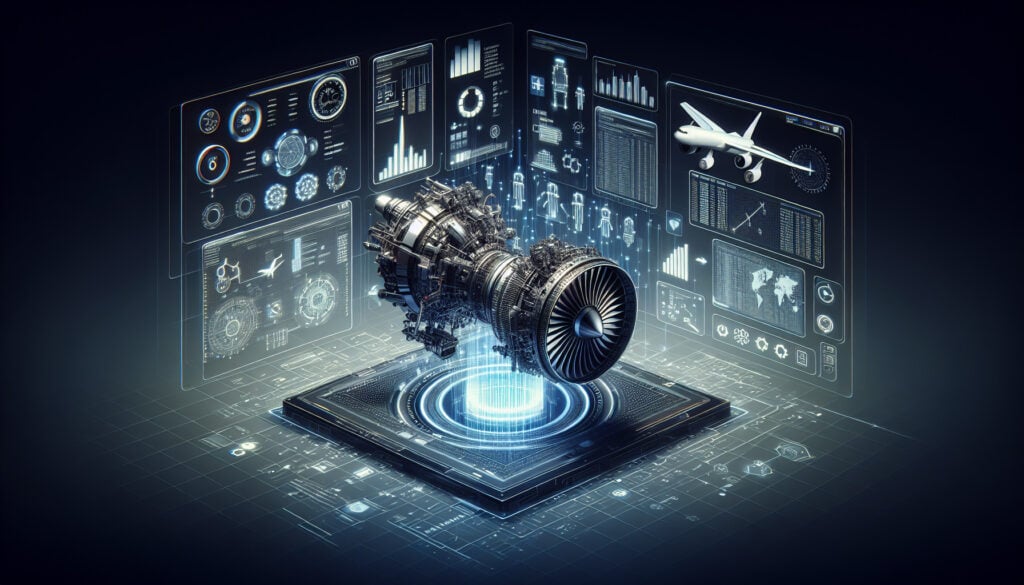A virtual representation of a physical object, process, or system that serves as its real-time digital counterpart.
- Metodologías: Clientes y marketing, Ideación, Diseño de producto
Gemelo digital

Gemelo digital
- Sistemas ciberfísicos (CPS), Gemelo digital, Internet de los objetos (IoT), Algoritmos de mantenimiento predictivo, Optimización de procesos, Sistema operativo en tiempo real (RTOS), Sensores, Simulación
Objetivo:
Cómo se utiliza:
- A gemelo digital is continuously updated with data from sensors on the physical object. This allows for simulation, monitoring, analysis, and optimization of the physical asset without disrupting real-world operations.
Ventajas
- Enables predictive maintenance and reduces downtime; allows for process optimization through simulation; improves decision-making by providing real-time insights.
Contras
- Is very complex and expensive to create and maintain; requires a robust sensor and data infrastructure; the accuracy of the twin depends on the quality of the data.
Categorías:
- Ingeniería, Lean Sigma, Fabricación, Diseño de producto
Ideal para:
- Creating a real-time virtual model of a physical asset to monitor, simulate, and optimize its performance.
Digital Twin technology is employed across various sectors, including manufacturing, healthcare, automotive, and smart cities, where it facilitates the management of physical assets by creating an accurate virtual representation that mirrors real-time conditions and operational performance. In manufacturing, for instance, a digital twin of a production line allows for detailed analysis of workflow inefficiencies, enabling manufacturers to optimize their processes and enhance productivity while minimizing waste. In the automotive industry, digital twins are utilized in the development and maintenance of vehicles; by simulating various driving conditions and scenarios, engineers can predict how components will perform over time, which aids in improving design and safety features. Healthcare applications often involve creating digital twins of patients, integrating data from wearable devices and health records to refine treatment plans and enhance personalized medicine. The construction sector benefits from digital twins in managing the lifecycle of buildings; they can track the ongoing performance of infrastructure, planning maintenance and upgrades proactively. This methodology typically involves collaboration among diverse teams, including engineers, data analysts, and domain experts, ensuring that the digital twin is accurately reflective of the physical entity. Furthermore, stakeholders at various project stages—from conceptual design through production and maintenance—can initiate or participate in the creation and refinement of digital twins, leveraging them for simulations and scenario analysis to drive better outcomes without interfering with the actual operations of the physical assets.
Pasos clave de esta metodología
- Develop a digital representation of the physical asset based on its specifications and design data.
- Integrate real-time data streams from sensors on the physical asset into the digital twin model.
- Implement algorithms for data processing and analysis to derive meaningful insights from the integrated data.
- Utilize simulation tools within the digital twin to test various operational scenarios and predict outcomes.
- Monitor the performance of the physical asset through the digital twin, identifying anomalies and inefficiencies.
- Conduct iterative optimization of the digital twin model based on feedback from simulations and real-world performance data.
- Enable predictive maintenance scheduling based on predictive analytics generated from the digital twin.
- Facilitate decision-making by presenting real-time data and projected scenarios to stakeholders.
Consejos profesionales
- Integrate advanced machine learning algorithms for anomaly detection to improve predictive analytics and maintenance scheduling.
- Establish a robust data governance framework ensuring data accuracy and ciberseguridad in sensor communications and digital twin updates.
- Utilize real-time feedback mechanisms to continuously refine the simulation models, enhancing their predictive capabilities and operational relevance.
Leer y comparar varias metodologías, recomendamos el
> Amplio repositorio de metodologías <
junto con otras más de 400 metodologías.
Sus comentarios sobre esta metodología o información adicional son bienvenidos en la dirección sección de comentarios ↓ , así como cualquier idea o enlace relacionado con la ingeniería.
Contexto histórico
1949
1950
1950
1960
1960
1960
1960
1940
1950
1950
1958
1960
1960
1960
1960
(si se desconoce la fecha o no es relevante, por ejemplo "mecánica de fluidos", se ofrece una estimación redondeada de su notable aparición)















Publicaciones relacionadas
Cuestionarios sobre molestias musculoesqueléticas
Pruebas multivariantes (MVT)
Análisis de regresión múltiple
Sistemas de captura de movimiento
Método MoSCoW
Prueba de la mediana de Mood